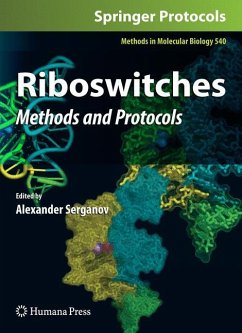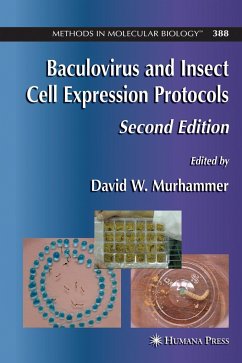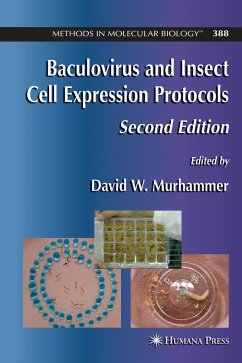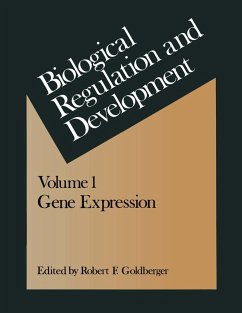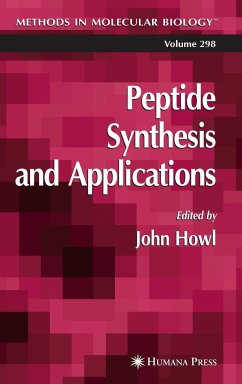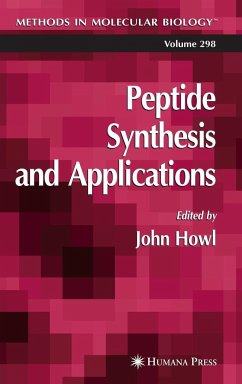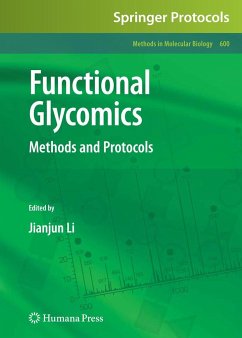Nicht lieferbar
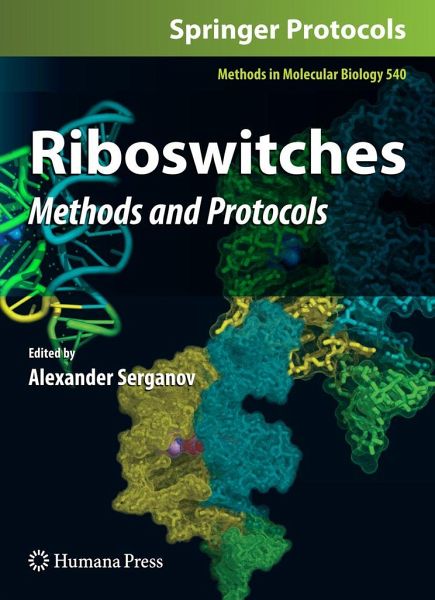
Riboswitches
Methods and Protocols
Herausgegeben: Serganov, Alexander
Versandkostenfrei!
Nicht lieferbar
The revolutionary discoveries of RNA interference and bacterial regulatory RNAs led to further breakthroughs such as the identification of riboswitches and related RNA sensors, mRNA regions capable of alternating their conformations in response to the presence of cellular metabolites and other physical or chemical cues. In Riboswitches: Methods and Protocols, expert researchers provide comprehensive and up-to-date coverage of various methods used to study riboswitches and other RNAs involved in gene expression control. Examining biochemical and modern biophysical techniques, the volume focuses on mRNAs responding to small organic molecules but expands the definition of a riboswitch to incorporate classes of RNA that undergo conformational transitions in response to other stimuli in order to control the expression of genes. Written in the highly successful Methods in Molecular Biology(TM) series format, chapters include introductions to their respective topics, lists of the necessary materials and reagents, step-by-step, readily reproducible protocols, and notes on troubleshooting and avoiding known pitfalls.
Cutting-edge and authoritative, Riboswitches: Methods and Protocols promises to inspire both novices and experts working in a wide range of contemporary biological areas who wish to further develop their RNA methodology.
Cutting-edge and authoritative, Riboswitches: Methods and Protocols promises to inspire both novices and experts working in a wide range of contemporary biological areas who wish to further develop their RNA methodology.
The transfer of hereditary information from genes to proteins is one of the essential pr- esses in all living organisms on our planet. Some genes are expressed without modu- tion throughout the life of a cell, while many others require various degrees of control to precisely balance cellular metabolism with environmental conditions. For many years, researchers attributed this regulatory function to protein molecules, which can direct gene expression at multiple levels, in response to various input signals, and with different degrees of selectivity. Even when the control of gene expression was achieved via direct interactions between proteins and mRNAs, the active role was routinely assigned to p- teins, while RNAs were considered merely as recipient molecules. The discovery of RNA interference and multiple bacterial regulatory RNAs caused a shift from the perception of proteins as the predominant regulators of gene expression to the acknowledgement of the importance of RNAs in many regulatory circuits. Such a viewpoint received strong support several years ago after the discovery of riboswitches and related RNA sensors - mRNA regions capable of alternating their conformations in response to the presence of cellular metabolites and other physical or chemical cues. These classes of RNA pass on cellular and environmental information directly to transcription or translation machinery without the assistance of proteins. The riboswitches are commonly defined as evolutionarily conserved mRNA regions capable of specific binding to metabolite molecules, and, as a result, adopting a particular RNA conformation that modulates gene expression.




